What’s the connection between an 1892 popular song, the world’s first purpose-built race track, an IBM computer and the film 2001: A Space Odyssey? Let me try to explain…
”Daisy, Daisy / Give me your answer, do. / I’m half crazy / all for the love of you”
It may be a bit tenuous, but Harry Dacre’s smash hit of ’92 probably inspired the naming of Daisy the little Siddeley. The co-founder of Brooklands race track, Tasmanian-born Ethel Locke King, surely hummed the familiar song as she decided what to call her new 1904 Siddeley two-seater.
Later, the song Daisy Bell was the first synthesised ditty created computer, by the IBM 7094, in 1961. The feat was referenced seven years later in Kubrick’s iconic film. That’s where Alexa was born…
Ok, ok, I said it was tenuous. But I’m sticking to it. It gets even better…
Dacre’s song is said to have been inspired by Daisy Greville, Countess of Warwick, one of Edward VIIs many mistresses when he was still Prince of Wales. In my mind, I’m certain that Ethel Locke King had the song in mind when she named her little two-seater: A motorcar made for two. But I’m probably wildly wrong. Maybe she had a cat called Daisy. But we can’t let facts get in the way of a good story1.
Famous old lady
Daisy the Siddeley, like her song, is a very famous old lady. There can be absolutely no doubt about that. She’s had an extremely full life in the hands of surprisingly few owners. She is said to have been the first car to have been driven on the newly constructed circuit. Sadly, however, Ethel Locke King must have put poor Daisy’s ignition out of sync when she chose to head the opening parade in another of her cars, the upstart Itala. But I think we can regard Daisy, after all these years, as the true First Lady of Brooklands.
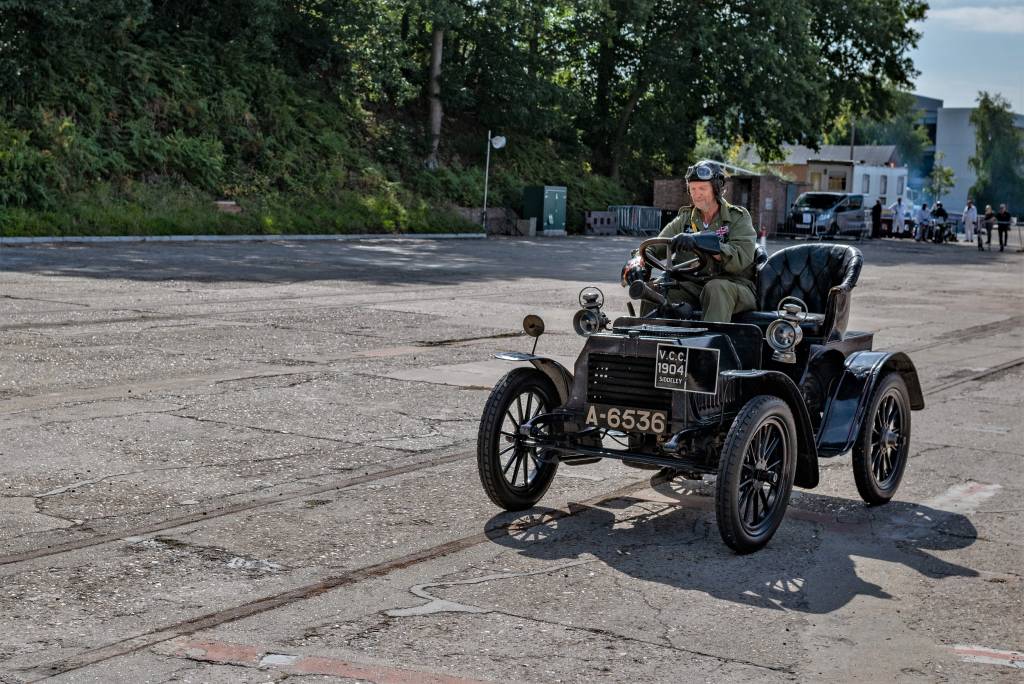
Dame Ethel enjoyed Daisy’s companionship for 35 years, entering her in the wonderful London-Brighton veteran run in 1930, 1932, 1934 and 1935—although on that last occasion the old girl (Daisy, that is) petulantly refused to start. Perhaps it was belated revenge for the snub of 1907. But Daisy’s life was about to change. On the eve of the war, and coincidentally just as the wonderful banked racing track was closed forever, Ethel sold her Daisy to racing driver Hugh Hunter. Poor Daisy.
Nevertheless, Hugh continued to further Daisy’s glittering career, piloting her during the motor industry’s Jubilee Cavalcade through London in 1946 and on the fiftieth-anniversary London-Brighton run in November of the same year. Later, Daisy took part in a long sequence of Brighton runs throughout the 1950s and 1960s.
Home to rest
Then, after her glittering career, Daisy came home to Brooklands, where she has remained ever since. So far, she’s outlived her original owner by 64 years. And I’ve had my eye on her for at least twenty of those years. But my sightings of Daisy have always been through a pane of glass. She became a special museum exhibit and enjoyed a well-earned bit of seclusion from the public, far from the sticky fingers of today’s toddlers. But the glass and tight surroundings made her a very difficult subject for the camera.
This enforced seclusion was a pity in other ways. I wouldn’t say I was driven half crazy, peering through the glass, as was the swain in Harry Dacre’s enduring song. But I have always felt I’d like to get a little closer to the old girl.
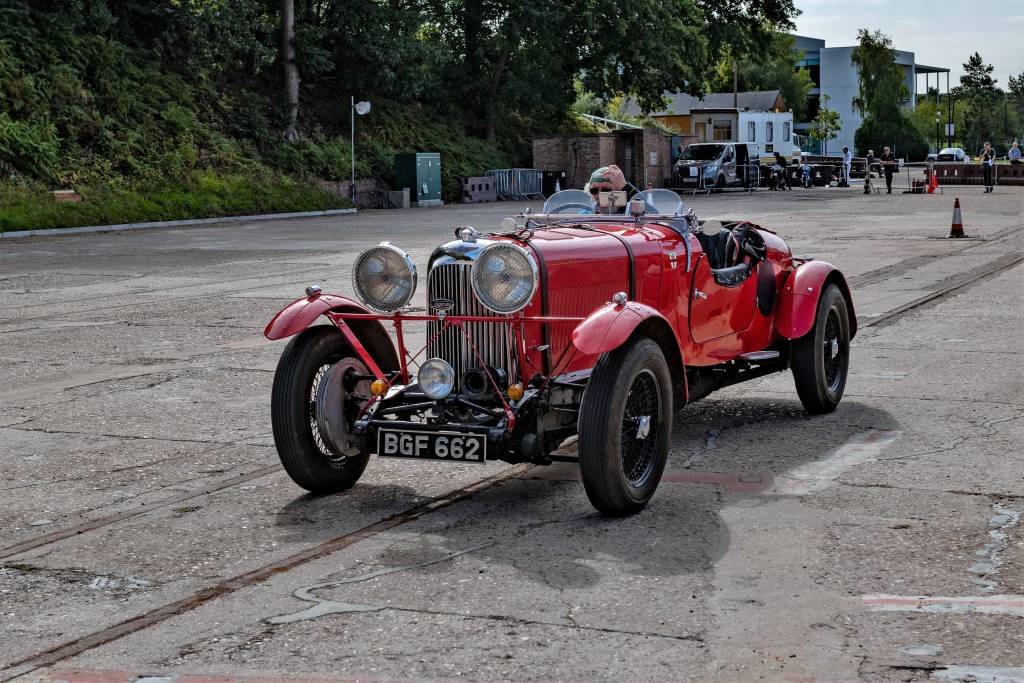
Last week I got my wish. I paid a routine Thursday visit to Brooklands, just to see what was going on. In these Covid times, though, it isn’t possible to just turn up at the gates and visits need a bit of planning: Social distancing, and all that. So I applied for my free tickets (as a club member) and arrived on a warm, sunny autumn morning.
Most times its quiet time at the museum during the week (except during school holidays) and I don’t feel at all crowded. A mooch around familiar territory, a snap or two of anything interesting that is allowed to park in front of the club house. But last week was different.
Out of captivity
A clutch of the museum’s cars and motorcycles had been released temporarily from captivity, much to my delight. They were to be found careering up and down the old finishing straight.
One of these vehicles, glory be, was Daisy herself, giving me her answer after all these years. One was another of my favourites, the 1935 Lagonda M45, a replica of the car Dr J O Benjafield and Geoff Manby-Colegrave drove in the 1935 Le Mans 24-Hour. I just love those moon-sized headlamps.
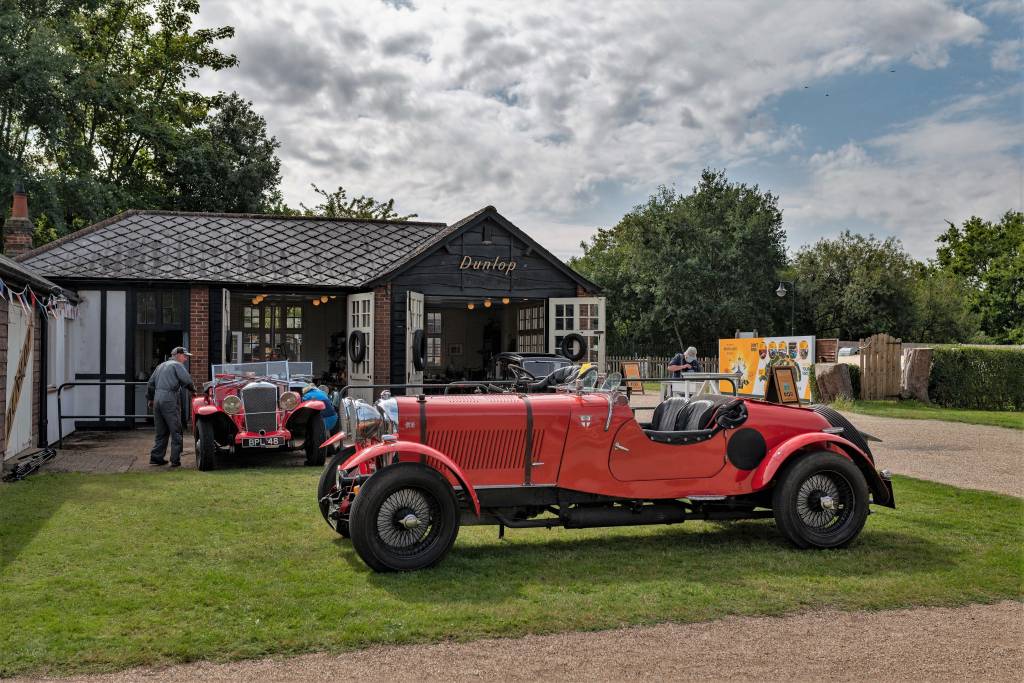
But let not the arriviste Lagonda upstage the true object of my desire. Sadly, I’d never seen Daisy in action before and she was a delight when I finally grasped the opportunity. I was mightily surprised to find she’s still a sprightly old dowager, bounding up and down the historic finishing straight at what must have been a good 20 mph.
I couldn’t help reflecting that, after 116 years of progress, we are now facing 20 mph limits throughout London thanks to the anti-motorcar obsessions of Mayor Kahn. Let’s not tell him that it would be a good idea to have a person with a red flag walking in front of every vehicle on the road, even though it could solve the problem unemployment for good and all.
It seems that nothing much has changed in all these years, and old Daisy would feel right at home in the Piccadilly of 2020. I just loved to listen to the chug-chug of Daisy’s motor as she capered around, enjoying another outing on the famous track that she helped to open 113 years ago…
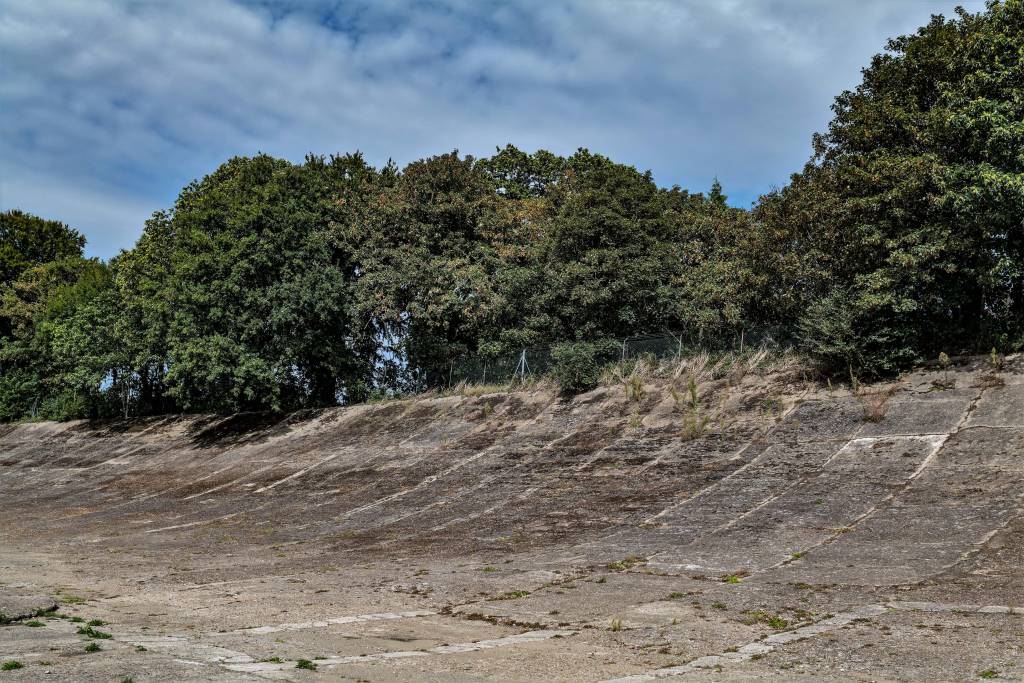
Pictures in this bit of whimsy taken by Mike Evans with the Leica SL2 and Sigma’s 35mm f/1.4 Art lens. Vive the L-Mount Alliance… Acknowledgement to Wayne Gerlach for some additional photo processing.
Read more on Macfilos about Brooklands over the years
- To paraphrase Mark Twain ↩

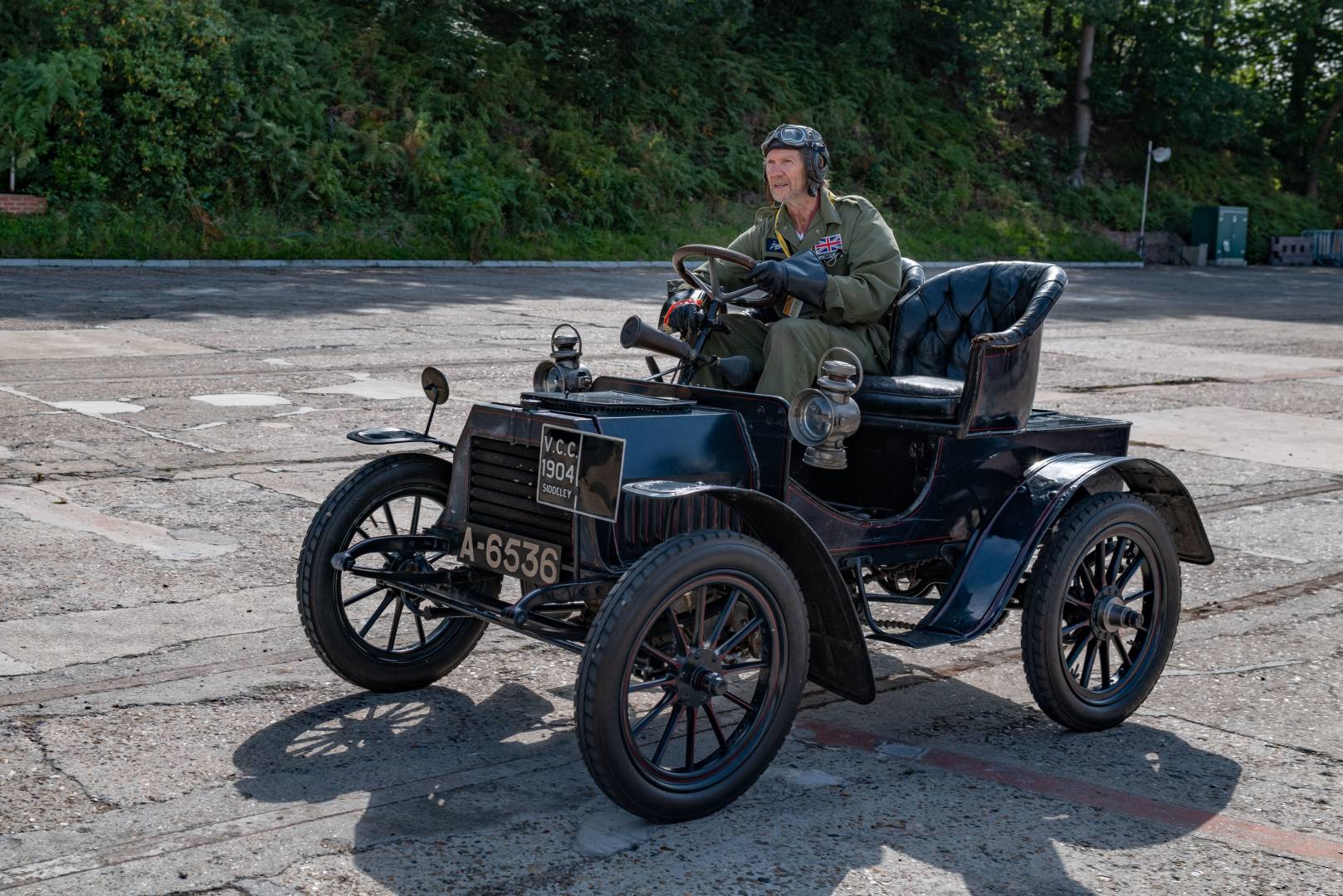
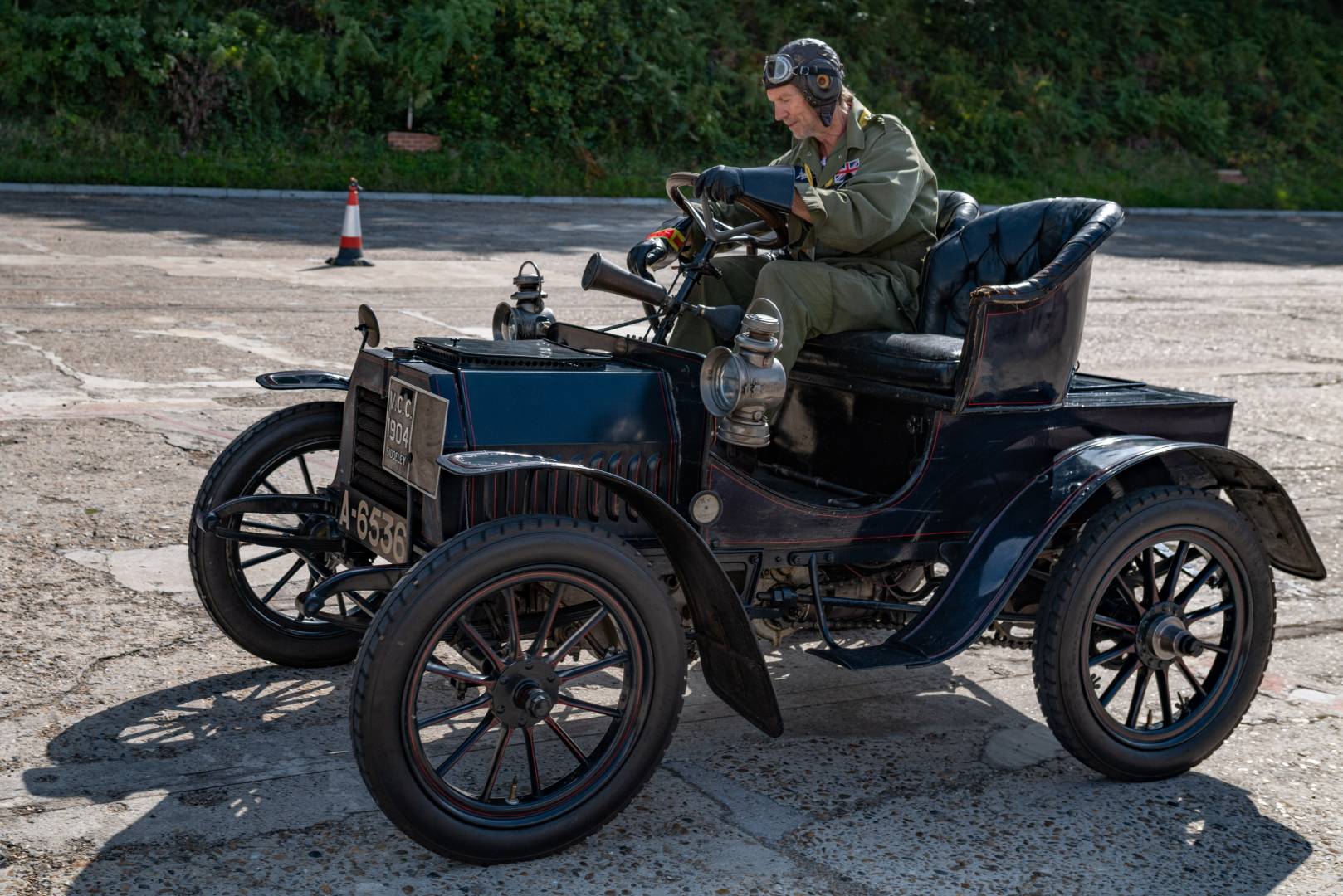
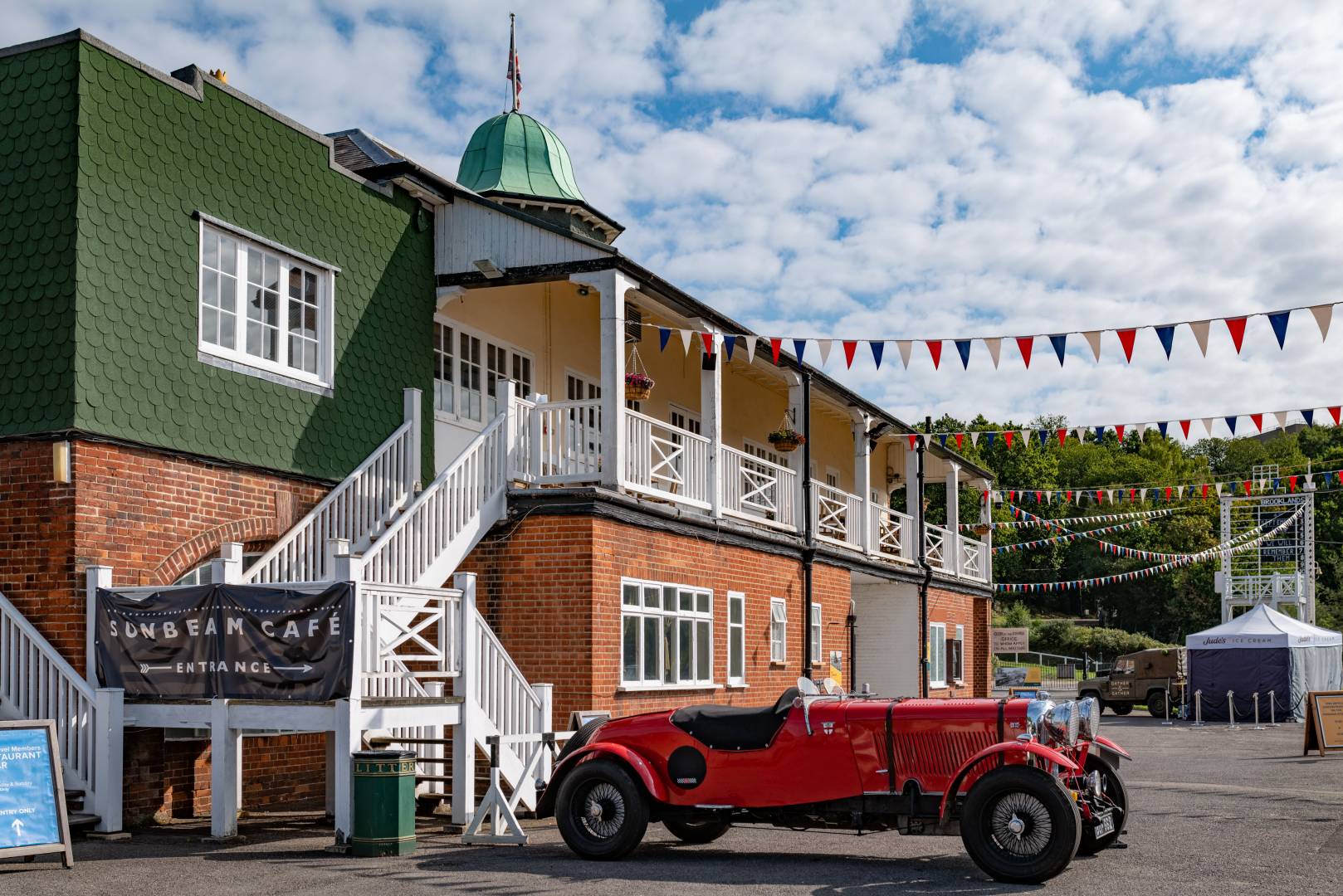
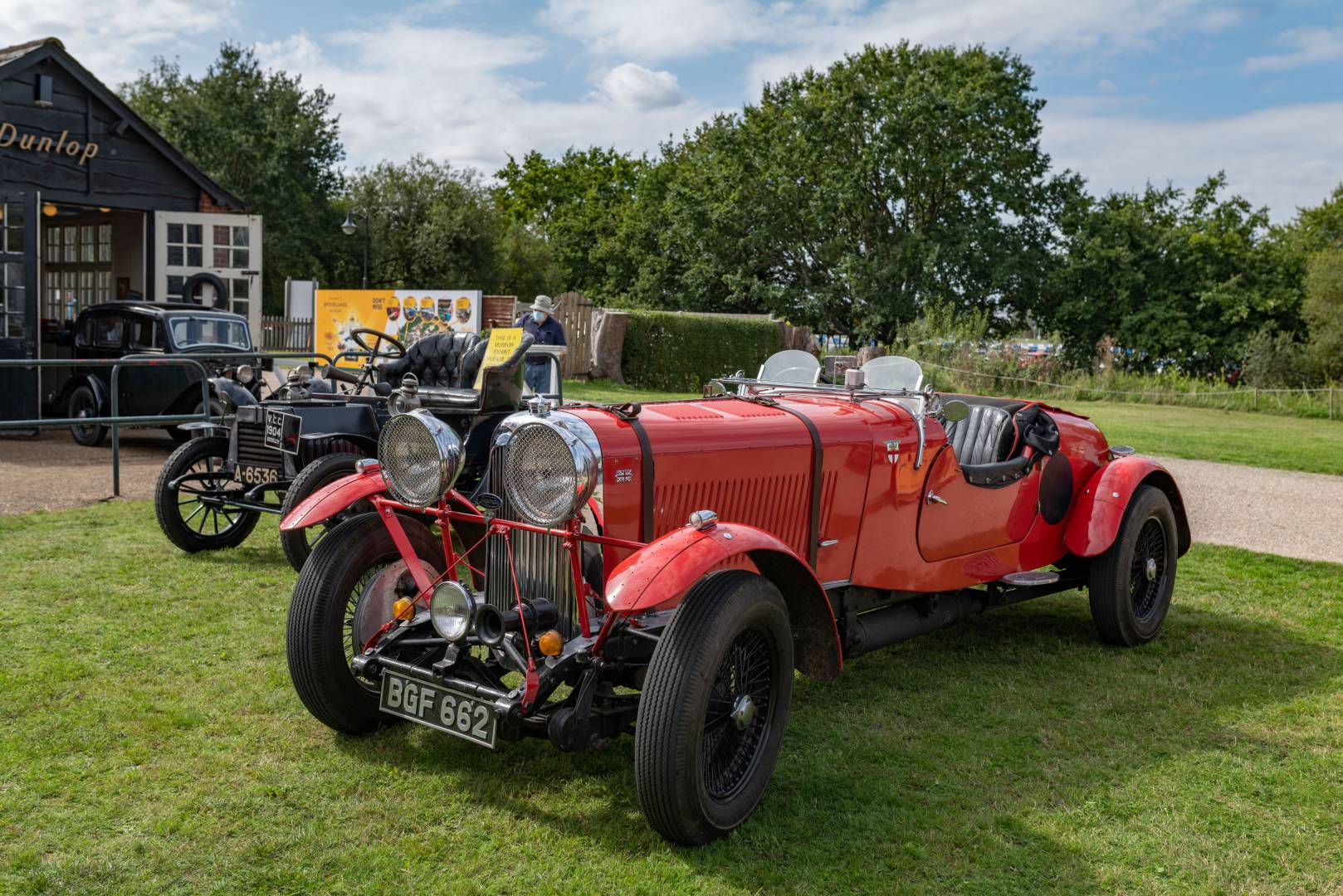
What do computers do just before dying?, sing a song to their beloved. Difficult to forget the scene, watched first as a kid, the thing was glorious. HAL improved the theme a lot after the video one. Thanks for sharing
Thanks for showing the images Michael.
I like the look of the Dunlop shed. Does your membership allow you to get in there with a high ISO setting?
And how much of the original banked track is still well maintained for heritage reasons? Your image of the museum section makes me wonder whether this is what our digital sensors will look like in 20-30 years from now.
Thanks Wayne. As far as I know, the Dunlop shed it garage is a maintenance base for staff use. I don’t think it is open to the public, although there are several indoor exhibition areas that would serve.
The section of banked track as part of the museum is short and is fenced off at either end. I would estimate about quarter of a mile at most. Because of the curve, though, you don’t see the ends when viewing from the finishing straight.
The old circuit is evident all round the industrial estate, in various states of repair, and very similar to the walls of an ancient city. At one part, incongruously, sits a large Tesco superstore.
Two nostalgia connections for me here. My late father used to sing that Daisy song, sometimes when he was shaving, if I remember correctly from over 60 years ago. Secondly, I have a nice picture of a slightly later large red Lagonda (from 1937) winning best in show at a Classic Car Show held in a very wet football field in Dublin. I will send it to you, Mike. The big Lagondas from that period were fabulous cars.
William
Thanks Michael for this wonderful article. The Daisy is indeed a lovely car and would really fit speed restrictions in our cities. What camera did you have? Q2 or SL2?
Jean
Thanks, Jean. It was the SL2 with the Sigma f/1.4 35mm Art lens. I did think of taking the Q2, which would have done a similar job, but decided I needed to get some examples from the Sigma in the can for future use if I do a review.